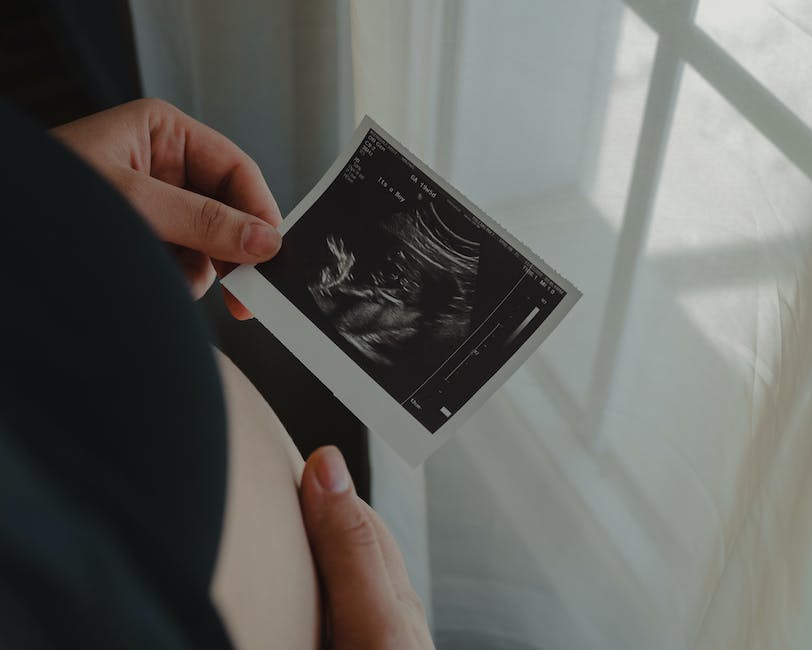Vanishing Twin Syndrome (VTS) is both a fascinating and devastating occurrence that affects a certain demographic of pregnant individuals. This phenomenon, resulting in one twin disappearing in the womb while the other continues to develop, can have far-reaching emotional, psychological, and physical implications on all parties. This comprehensive breakdown of the syndrome delves into its medical understanding, investigates potential health implications for the surviving twin, examines the emotional impact on parents, and uncovers the processes of medical management and aftercare. By understanding these aspects, it becomes easier for those affected by VTS to navigate the challenging situation and seek the needed support.
What is Vanishing Twin Syndrome?
Understanding Vanishing Twin Syndrome
Vanishing Twin Syndrome (VTS) is a term used to define a pregnancy in which one or more fetuses in a multi-fetal pregnancy does not survive, resulting in the disappearance and reabsorption of its tissues into the body of the mother, the placenta or the surviving twin. It is named so because the vanished twin is only discovered when a previously identified twin disappears in prenatal imaging.
The occurrence of VTS is somewhat common and is suspected to occur in approximately 21-30% of multifetal pregnancies. With the advent of early ultrasounds, more cases are being identified today. The actual rate of the syndrome is thought to be higher as the event often goes unrecognized in early pregnancy without routine scans.
This phenomenon typically occurs in the first trimester. In later stages, it may lead to complications such as preterm labor, sepsis or hemorrhage, although these are quite rare. This can often happen without any noticeable symptoms. However, some women might experience mild cramping, pelvic pain or bleeding. VTS can occur in any type of pregnancy but is more common in pregnancies conceived via assisted reproductive technologies, such as in-vitro fertilization (IVF).
Impacts of Vanishing Twin Syndrome
The surviving child is usually not affected by VTS, especially when it happens in the first trimester. However, in some instances, it can have potential short and long-term impacts. One common concern related to VTS is the emotional impact on the parents who expected multiple births, as they often grieve the loss.
On a physiological level, when VTS occurs in the second or third trimester, there may be a higher risk for surviving twin complications. There might be an increased risk of preterm delivery, low birth weight, and issues related to the structure and function of the placenta.
In certain cases, VTS can also have neurological implications for the surviving twin. Research suggests a potential association between VTS and cerebral palsy, though the exact causality remains unknown. These children may need monitoring for developmental or cognitive delays.
Further, the death of one twin in the second or third trimester can increase the chance of coagulation disorders in the surviving twin due to a sudden surge of blood flow, a condition known as twin-to-twin transfusion syndrome. These complications require specialized medical attention and monitoring.
However, it’s also essential to note that many surviving twins of VTS grow up healthy without any problems. The majority of these potential complications are exceptions rather than the rule.
The Current State of Medical Management and Development of Future Research on Vanishing Twin Syndrome
As of now, the resources available to medical professionals can’t prevent Vanishing Twin Syndrome (VTS), mainly because its causes generally remain a mystery. Yet, regular prenatal care can assist in detecting VTS at an early stage, making it possible to manage any ensuing complications. During such troubling times, emotional support and counseling can prove instrumental, especially if the individual is struggling to cope with the loss.
Moreover, ongoing research is delving deeper into the precise mechanisms that trigger VTS, looking at genetic factors, and assessing the influence of assisted reproductive techniques on the occurrence rate of the syndrome. A better understanding of these areas could equip healthcare professionals with the necessary knowledge to offer improved advice and care to patients battling VTS. This can also aid in formulating preventive methods and enhancing outcomes for both the mother and the surviving twin.
Despite VTS being fairly enigmatic, it’s burgeoning the conversation about multi-fetal pregnancies’ complexity. This growing awareness is steering the path in medical advancements and probable therapeutic options.

The Health Implications for the Surviving Twin
Gaining Insight on Vanishing Twin Syndrome and its Effects on the Surviving Twin
A phenomenon known as Vanishing Twin Syndrome often happens when multiple pregnancies are noted early during the first trimester, only for one or more fetuses to disappear—hence, “vanish”—in later ultrasounds. The ‘vanishing’ may be a result of one fetus’s death, which is later absorbed by either the mother, the placenta, or the surviving twin.
Physical Health Implications for the Surviving Twin
Most surviving twins of a vanished twin do not have notable physical health differences from those without a vanished twin. However, a 2019 study published in the American Journal of Obstetrics and Gynecology found that a surviving twin from a vanished co-twin pregnancy had about 25% higher odds of experiencing preterm birth.
Survivors also have an increased risk of what is known as “Twin Transfusion Syndrome,” a complication of blood flow between the twins which can cause one twin to receive too much blood and the other too little.
It’s also important to note that the remaining fetus may be at risk for physical complications if the vanishing twin event occurs later in the pregnancy or if there are abnormalities with the placenta.
Mental and Neurological Health Implications for the Surviving Twin
Researchers have found some correlation between Vanishing Twin Syndrome and an increased risk of cerebral palsy in the surviving twin, though the reasons behind this link are not yet fully understood.
There’s also been scientific investigation into potential mental and emotional effects on surviving twins. Smaller studies have shown an increased risk of depression and anxiety in twins who lost a co-twin either in utero or in early childhood.
Potential Impact into Adulthood
It is largely unknown and understudied whether the effects of Vanishing Twin Syndrome follow the surviving twin into adulthood, as it is challenging to identify adults who were surviving twins due to the condition often being undiagnosed. Some adult twin survivors have reported feelings of loneliness, guilt, or a sense of something missing, although these experiences vary and may often be influenced by whether the individual is aware of their vanished twin.
More comprehensive longitudinal studies are needed to truly understand the long-term physical and mental health implications of this experience. Current research is limited, and further investigation would help provide clearer guidelines for monitoring and supporting the surviving twins throughout their lifespan.
Understanding Vanishing Twin Syndrome
Vanishing Twin Syndrome is a medical phenomenon that involves potential health risks for the surviving twin. Despite these risks typically being low, it’s crucial to understand the implications both physically and mentally to offer suitable care and support for twins and their families. Many surviving twins do grow into healthy adults, yet increased awareness about the syndrome can certainly enhance their quality of life.

The Psychological Impact on Parents
The Psychological Impact of Vanishing Twin Syndrome (VTS)
Vanishing Twin Syndrome (VTS) is a condition that transpires when one twin vanishes during pregnancy, normally due to a miscarriage. The disappearing twin’s fetal tissue tends to be absorbed by the surviving twin, the mother, or the placenta. This sudden, unforeseen loss often produces significant psychological stress for parents. Feelings of uncertainty, particularly about the well-being of the surviving twin, can add to the mental toll this syndrome imposes.
Common Emotional Reactions
Parents may experience a range of emotions, from shock and denial to sadness and guilt, upon learning that they have experienced VTS. A unique aspect of grief in VTS is that the news often comes unexpectedly, leaving little room for immediate emotional processing. There’s a phenomenon psychologists call “disenfranchised grief” which refers to a sense of loss that isn’t socially recognized or acknowledged. In cases like VTS, the grief can be intensified because the loss may not be openly mourned or even acknowledged by others, making it harder for parents to articulate their feelings.
Potential Grief Responses
The grieving process in VTS can be unpredictable and unique to each individual. Parents may feel the loss of a child they never got to meet, coupled with concerns for the surviving twin. This double-fold predicament can lead to complicated grief, characterized by prolonged and intense mourning, difficulty accepting the loss, and disruption in daily life. Some parents may experience feelings of guilt, wondering if they contributed to the loss in any way. A mother may blame herself, while a father may feel helpless or unable to provide adequate support.
Coping Mechanisms
Seeking professional help from therapists or psychologists can be beneficial for parents experiencing VTS. Mental health professionals can assist in normalizing the array of emotions experienced, providing strategies for coping, and facilitating communication between partners. They can also address potential anxiety related to the health and development of the surviving twin.
Another coping mechanism is seeking support from others who have undergone a similar experience. Joining a support group, whether in person or online, can provide a safe space to express feelings, share experiences, and receive comfort and understanding from others who truly comprehend the depth of the loss.
Parents may also find solace in private commemorative acts, such as naming the lost twin, writing a letter or journal entry, or holding a small memorial ceremony. This can provide potential closure and acknowledgement of the twin’s existence, countering the sense of disenfranchised grief.
A Therapeutic Approach
Therapists and psychologists approach parents dealing with VTS with empathy and understanding. Cognitive Behavioral Therapy (CBT) could be employed, focusing on managing the negative thought patterns and helping parents navigate their loss. Other therapeutic methods like Eye Movement Desensitization and Reprocessing (EMDR) can be used to alleviate traumatic stress symptoms associated with miscarriage.
In conclusion, Vanishing Twin Syndrome (VTS) can induce a variety of emotional reactions among the affected individuals and their loved ones. Each couple’s response to the diagnosis will differ based on numerous factors; some people may recover quickly, while others might require a more extended period and additional emotional support. It is essential to understand that there’s no “correct” way to deal with this experience. Recognizing the loss and allowing oneself to grieve are usually integral first steps on the journey to healing.

Medical Management and Aftercare
The Medical Dynamics of Vanishing Twin Syndrome
Vanishing Twin Syndrome (VTS) is a phenomenon during early pregnancy where one of the fetuses in a multiple pregnancy mysteriously disappears, leaving the other one alone. This often happens due to a miscarriage, where the fetus dies and is subsequently absorbed wholly or partially by the mother’s body. If a couple confirms a multiple pregnancy via an initial ultrasound but only sees one fetus in a later scan, doctors may diagnose VTS.
Once VTS is diagnosed, the primary focus of medical management is to ensure the surviving fetus’s well-being. Healthcare providers will regularly monitor the mother to guarantee that the existing twin develops normally and the pregnancy has no complications. The mother may notice a slight decrease in her pregnancy symptoms, contingent upon when the fetal loss occurred.
After the pregnancy, medical care continues to observe the growth and condition of the surviving baby. The vanishing twin rarely impacts the surviving fetus, ensuring that the newborn is generally healthy. However, in isolated instances, the survivor may have a raised probability of developing cerebral palsy. Some surviving individuals might also exhibit Lone Twin Syndrome or Twinless Twin Syndrome—a unique psychological phenomenon defined by a sense of missing their twin.
Psychological Aftercare and Emotional Support
Aside from the physical impact, the vanishing of a twin can also have significant emotional effects, especially on the parents. The reaction to the syndrome varies greatly from person to person and largely depends on how the individual process grief.
In managing the psychological effects of VTS, it is important for the parents to seek professional help if they struggle with feelings of loss and grief. Therapists, psychologists, or mental health counselors who specialize in bereavement or pregnancy loss should be consulted.
Support groups also play an essential role in assisting parents throughout the grieving process. Organizations like The Twin to Twin Transfusion Syndrome Foundation and Mommies of Miracles provide resources and support for those affected by twin loss.
In addition, the parents might find comfort in commemorating their lost child. This could include activities such as naming the lost twin or including them in family events and milestones. However, the way one chooses to remember their child should be personal and fitting to their individual healing process.
Last of all, parents who have experienced VTS should discuss their condition with their medical provider before planning for future pregnancies. This is crucial as there might be a risk of recurrence in subsequent multiple pregnancies.
Caring for the Surviving Twin
If the surviving twin is a child or an adult when they learn about their lost sibling, they may experience feelings of loss or grief. Some may feel a strange sense of loneliness or have dreams about their twin.
Parents should be open about the loss with the surviving twin when they reach an age where they can understand the concept. A mental health professional or counselor could provide guidance on how to approach this difficult conversation.
In conclusion, the effects of Vanishing Twin Syndrome reach beyond physical health and deeply impact emotional well-being too. Therefore, it’s crucial that those affected by VTS receive comprehensive care, including medical supervision and emotional support, fostering a healthy recovery and healing journey.

Vanishing Twin Syndrome (VTS), while sometimes passing unnoticed, can have a profound effect on the surviving child and the parents alike. Medical management and aftercare procedures are meticulously designed to cushion these impacts. Through understanding the syndrome and its possible outcomes, stakeholders can work together to ensure the optimum physical and psychological well-being of those most deeply affected. Strategies are also needed to offer assistance to parents grappling with the emotional aftermath, guiding them towards effective coping mechanisms and support networks. Ultimately, the pursuit of knowledge about VTS fosters compassion, understanding, and improved medical practice for those in the center of this experience, illuminating a path toward healing and resilience.
